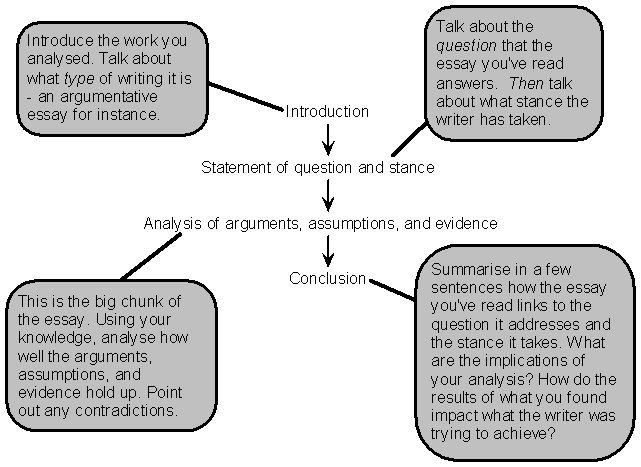The structure of an analytical essay
There are four major sections of an analytical essay, as presented in the following diagram. In the introduction, you don’t do any analysing; you’re just trying to introduce the piece of work (such as an essay) you’re analysing to the reader. Don’t assume that they’ve read the essay either. Introduce it as if they haven’t read it, but don’t waffle on, so that if they have read it they get a nice reminder rather than paragraphs of wishy washy content.

The second part of your essay does two things: introduces the question that the original essay is trying to answer, and tells your reader how the writer answered that question. For instance:
Question: Should members of the general public be allowed to own guns and why?
Answer: With proper gun control legislation and rigid enforcement, gun ownership by the general public is perfectly acceptable.
The writer’s answer to the question is their stance on the issue.
The third part of your essay is where you actually do the analysis of the original essay. You need to analyse these things:
Assumptions made by the writer. Not only the upfront assumptions, but the hidden assumptions. Determine whether these assumptions are justified or not.
Arguments made by the writer. Specifically, the main argument and the arguments supporting this. Once again, there can also be hidden arguments that you might need to analyse.
Contradictions that result from any assumptions made by the author. They might say one thing, then later on say something that contradicts what they said earlier.
Evidence presented by the author. Is the evidence valid? Is it relevant to their argument?
Click here to move on to the next topic: Hidden assumptions and arguments